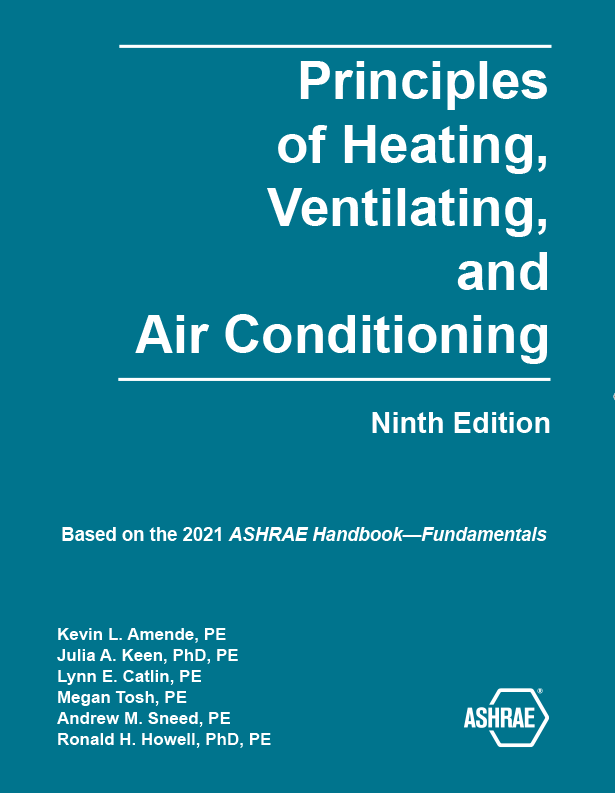
This textbook outlines key HVAC fundamentals based on the 2021 ASHRAE Handbook—Fundamentals
Principles of Heating, Ventilating, and Air Conditioning, Ninth Edition, is based on content from all four volumes of the ASHRAE Handbook, pulling heavily from the 2021 ASHRAE Handbook—Fundamentals. It contains the most current ASHRAE procedures and definitive yet easy-to-understand treatment of building HVAC systems, from basic principles through design and operation.
This book is suitable both as a textbook and as a reference book for undergraduate engineering courses in the field of heating, ventilating, and air-conditioning; for similar courses at technical and vocational schools; for continuing education and refresher short courses for engineers; and for adult education courses for professionals other than engineers, especially when combined with the ASHRAE Handbook.
Several significant changes have been made for this revised edition, including changes to chapter content and organization with the goal of ensuring the content is approachable and practical. For many chapters, a single example building is used to enhance consistency and further students’ understanding, and the removal of residential discussions and examples has given the book a more pointed focus on commercial calculations and applications.
Specific changes include the following, among many others:
- The first chapter has been revised to provide not just history but also updated information regarding current trends and the possible future of the HVAC industry.
- The Thermodynamics and Psychrometrics chapter content has been reorganized, and additional materials on psychrometrics, including additional psychrometric charts covering low temperatures and higher elevations, have been included.
- The System Loads chapter reflects reorganization to better walk the user through the calculation process used by professionals.
- The Energy Estimating Methods chapter has been streamlined to better reflect the current processes used by today's energy modelers and connects energy estimation with load calculations presented in the textbook.
- The Duct and Pipe Sizing chapter includes expanded information, tables, and charts used for hydronic pipe sizing with updated example problems, allowing for more thorough topic coverage.
- The Hydronic Heating and Cooling System Design chapter includes updated general content based on the latest design trends and requirements as well as expanded information on typical hydronic heating/cooling equipment and system types.
In addition, several entire chapters have been removed from the print book but will be available online. The online materials include information on the following topics:
- Additional Psychrometric Charts
- Air-Processing Equipment
- Cogeneration and Heat Recovery Systems
- Economic Analyses and Life-Cycle Costs
- Heat Exchanger Equipment
|
- Heating Equipment
- Panel Heating and Cooling Systems
- Radiant Times Series (RTS) Method
- Refrigeration Equipment
- Systems Design Problems
|
PURCHASE
Student Members pay only $59 for this publication. Learn more
University Bookstores wishing to purchase copies in bulk should contact Customer Service at cservice@ashrae.org or by calling 404-636-8400 (or toll-free via 800-527-4723). Bookstore purchase must be prepaid; the books cannot be ordered on consignment.
Attention Educators: Considering this book for your next course on HVAC design and application? Find out how you can get a free desk copy.
A paperback Solutions Manual with worked solutions to the problems at the end of each chapter is also available to instructors. To purchase the Solutions Manual, please email a request on university letterhead to educopies@ashrae.org or fax the same to 678-539-2152.”
You might also like: